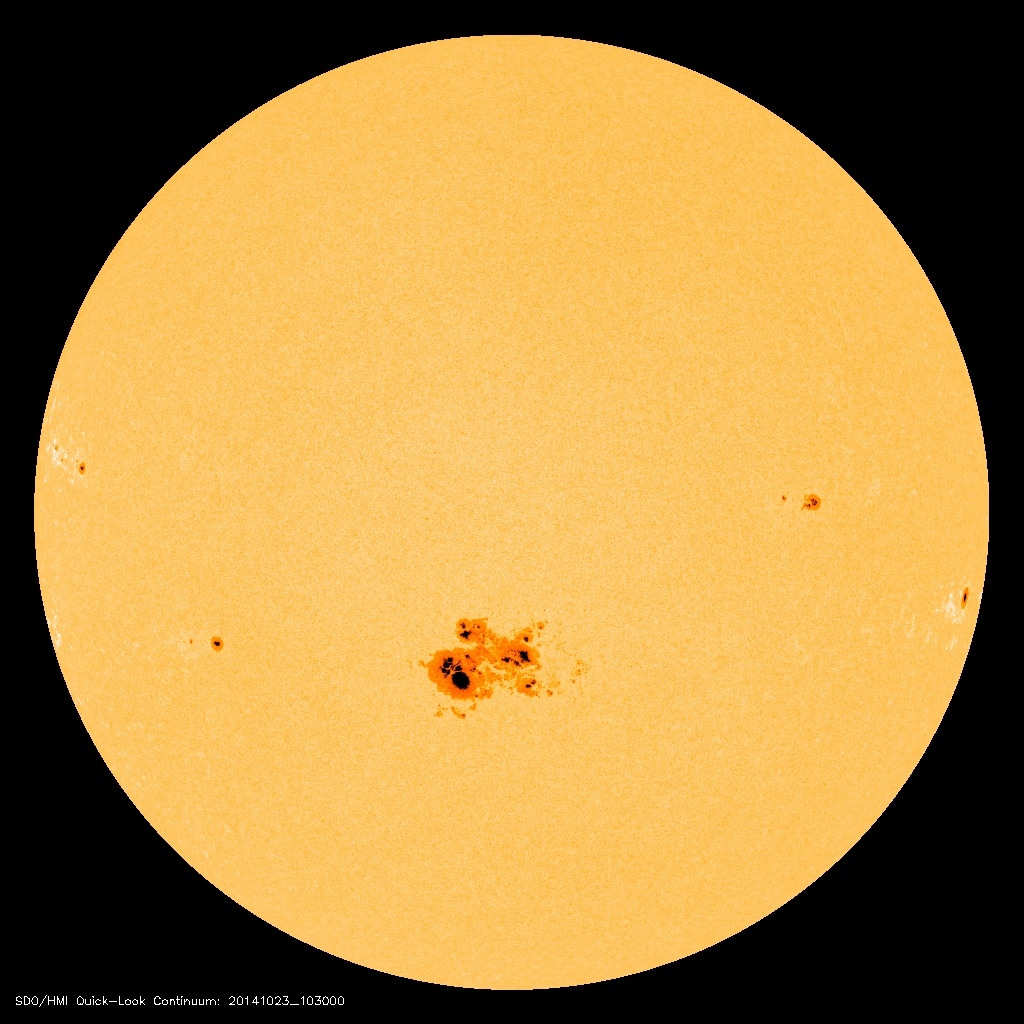Just a reminder of the partial solar eclipse today, Thursday October 23, which will provide eastern U.S. watchers with the best display near sunset. Do not view the sun without eye protection! (even multiple sunglasses are unsafe)
Giant sunspot group 2192, the largest since 1996, will also be pointed toward Earth. This spot has been “crackling” with flares, and it is a little mystifying that a large coronal mass ejection (CME) event has not yet occurred. Here’s a self-updating movie of the solar disk through today, as sunspot 2192 rotates into an Earth-pointing position:
A major CME event in the next few days from Sunspot 2192 could produce auroral displays into the middle latitudes a few days after the CME.
Over the eastern U.S. the eclipse will peak near sunset, and over the western U.S. the eclipse will occur during the afternoon and end before sunset. Weather will allow viewing over much of the country, but cloudy and rainy weather will exist at eclipse time over the Pacific Northwest, Wisconsin, and New England. Here’s a cloud forecast movie for the U.S.
I’ll be doing a time lapse video of the setting sun, weather permitting, when the partial eclipse will peak at about 40% at sunset at my location. I hope to also catch the sunspot group, which currently looks like this in visible light:
Here’s an eclipse calculator simulation for your location.
DO NOT view the sun with the naked eye! Advice on methods for safely viewing the sun are provided by Astro Bob at UniverseToday.com.

 Home/Blog
Home/Blog




